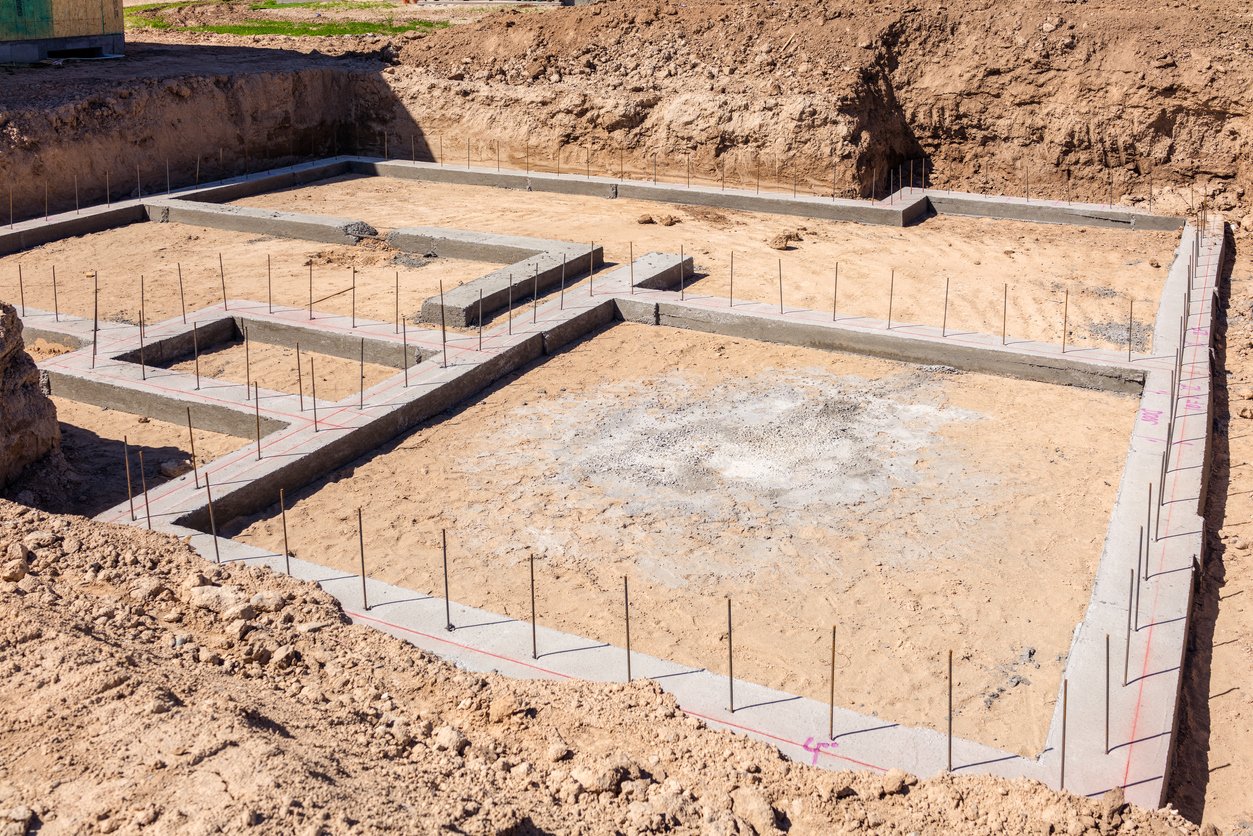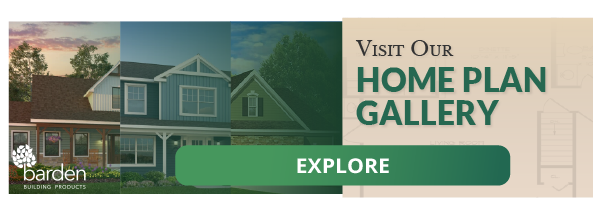
When we say Barden homes are 100% customizable, we really mean it – they are indeed completely customizable from top to bottom.
And yes, that includes the foundation.
A major component of any custom home project, choosing the right foundation matters not only for giving a home the base-level support it needs, but also adding to a house’s functionality – a basement foundation can essentially add another floor to a home.
Let’s dig into the most common manufactured home foundation types that Barden homeowners consider.
The 5 Home Foundation Types Barden Customers Want
Mythbusting Foundation MisconceptionsFrom cost to cracking, we tackle a few wrong ideas people have about custom home foundations: |
The most common house foundation types future Barden homeowners choose for their panelized homes include:
- On-grade slab
- Poured concrete
- Concrete block
- Precast
- Insulated concrete form (ICF)
1. On-Grade Slab
Exactly as it sounds, this house foundation type is indeed a poured concrete pad that a home sits on.
In creating this foundation, concrete is poured over top large reinforced concrete footers poured below the frost line. In addition to giving support, it prevents shifting and settling. On-grade slabs are most commonly used for homes in warmer climates, as frost heave typically isn’t an issue.
While on-grade concrete slabs are an option for Western New York home builders, we don’t recommend them – frost can do a number on an on-grade slab. Foundation issues after a few tough winters are the last thing any homeowner wants.
2. Poured Concrete
Concrete home foundations are the most popular in Upstate New York and the Northeast.
To create these, a hole is excavated and footers are poured below the frost line, just like a slab, albeit deeper underground. Wooden forms are placed to provide shape to the foundation walls, and then concrete is poured into the forms. When the concrete in the walls has set, more concrete is poured to form the floor.
Homes built on poured concrete foundations have basements ranging in size from a crawlspace to cavernous 10’ high ceilings.
3. Concrete Block
Like on-grade slab and poured foundations, a block foundation sits on reinforced concrete footings.
stead of walls being poured, however, cinder blocks are stacked precisely and cemented with mortar. To finish the job, the blocks are filled with poured concrete. Sometimes the blocks are reinforced with rebar.
Block foundations are comparable to poured foundations. The difference is regional preference – block foundations are most popular in the greater Rochester, NY area.
4. Precast
Name brands such as Superior Wall have made this home foundation type popular in the Northeast.
Instead of footings, the basement is excavated and an intricate layering system of sand, gravel, rocks, and vapor/moisture barriers is placed at the bottom. The foundation walls are made off-site in segments with special machinery to cure the concrete in a quick and controlled process.
Depending on a construction company’s capabilities or customer specifications, precast segments may have insulation and studs (for wiring and drywalling the basement) preinstalled. Similar to our panelized home construction method, precast segments are delivered on-site, lowered into place, and locked together. The basement floor is then poured with concrete.
Some builders love the precast foundation system and swear by it. Others won’t touch it. These foundations tend to be more pricey than poured concrete or block. They’re also often subject to long delays due to high customer demand.
If you plan to finish your basement, however, the added convenience of preinstalled studding and insulation may be worth the headache and expense.
5. ICF (Insulated Concrete Form)
ICF foundations is the new(er) kid on the block.
They combine all of the benefits from the previous types of foundations for manufactured homes.
Stackable forms are placed atop concrete footers. The forms are specially made and come covered with insulated foam inside and out.
Unlike a poured foundation, after the forms are filled with concrete, they stay in place. This allows for the strength and stability of a concrete poured/block wall along with the preinstalled insulation value of the precast wall.
If you’re looking for the ultimate foundation type, this seems to be the ticket at the moment.
ICF foundations do have downsides:
- They require special equipment and knowledge to manufacture.
- There are a limited number of contractors in Western New York with the expertise to construct these foundations.
- They have a hefty price tag.
3 Custom Home Foundation FAQs
Here are a few FAQs & their answers that we get about foundation selection:
1. How do the Costs of These Foundations Compare?
The cost of each foundation type varies depending on factors like materials, labor, and the complexity of construction. Typically, slab foundations might be less expensive due to fewer materials and less labor, while basements could be more costly due to extensive excavation and more materials.
2. What Maintenance is Required for Each Foundation Type
Maintenance varies by foundation type. Slab foundations may need monitoring for cracks and settling. Crawl spaces require ventilation to prevent moisture buildup, and basements might need regular checks for water leaks and mold growth.
3. How Does Each Foundation Type Affect the Resale Value of a Home/
The type of foundation can influence a home's resale value. Homes with basements often have higher resale values due to the added usable space, especially in regions where basements are common. Slab and crawl space foundations might not add as much value, particularly if they are less desired in the area.
Choosing the Right Foundation Type for Your Home
There are numerous foundation types for your home. A few of the other options include:
- Sand bag
- Earth bag
- Stone
- Wood
- Piers
To some extent, the right foundation for you depends on what you want for your next house. Some customers insist on having a basement, while others can go without because of accessibility concerns. Other future homeowners would rather invest their home-building budget into customizing the spaces their families will use the most.
For your Barden home, you’re welcome to utilize any foundation type you’d like – so long as it meets your locality’s building code.
Ready to get started on designing your home from the ground up?
Start with the right floor plan! Check out our Home Plan Gallery:



